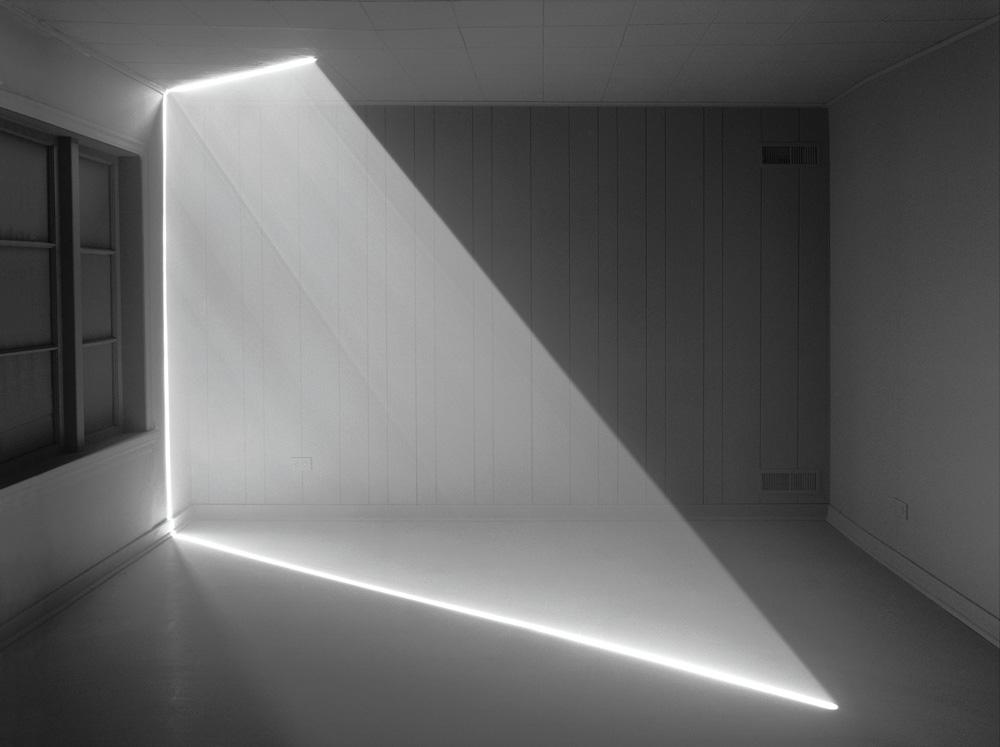The awareness of existing at a threshold, whether within ourselves, in the world, or between this one and the next, is uniquely human, as is the desire to cross over. In James Nizam’s exhibition “Trace Heavens,” the domestic architecture of the house represents the threshold between “out there” and “in here,” the site of ritualized action and liminal experience where for a moment we have a foot in both.
Inspired by the ancient solar architecture of Europe and the Americas as much as by methods of art-making that have their genesis in the late 1960s, Nizam performed a series of architectural slicings and piercings in order to channel light. The resulting black-and-white photographs, Shard of Light (2011), Drill Holes Through Studio Wall (2012) and the Thought Form works (all 2011), show his manipulation of light across an architectural threshold. They transform nondescript rooms into containers of radiant ideal forms and give dimension to the immateriality of light, bringing it to the point of sculpture.
The complex beauty of “Trace Heavens” is that Nizam has attempted and achieved more than clever light illusions. Through a series of revolving metaphors (cosmos/architecture/mind and photographic apparatuses/architecture/eye), he draws a picture of an ancient celestial world meshed with our perceptual world meshed with the art world.
Given the importance of time, anticipation and patience to Nizam’s creations (and presumably to the ancient astronomers who marked the passage of the sun on its yearly return), the artist’s decision to fix the light in photographs is curious but nonetheless effective. Experiencing the work as photographs encourages an engagement with the history of photography, and propels the photographic apparatuses/architecture/eye metaphor forward. The deeper effect is to distance the work from a specific physical location, and, more importantly, a specific time. This pushes the work to a space that is distinct from the ordinary, making Nizam’s light and our experience of it border on the eternal.
By creating this distance from the everyday, “Trace Heavens” brings the often dampened recognition of our liminal state back to the threshold of consciousness. It puts it in a place that is a fundamental expression of what it means to be human.
This is a review from the Fall 2012 issue of Canadian Art. To read more from this issue, please visit its table of contents.









